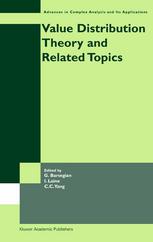

Most ebook files are in PDF format, so you can easily read them using various software such as Foxit Reader or directly on the Google Chrome browser.
Some ebook files are released by publishers in other formats such as .awz, .mobi, .epub, .fb2, etc. You may need to install specific software to read these formats on mobile/PC, such as Calibre.
Please read the tutorial at this link: https://ebookbell.com/faq
We offer FREE conversion to the popular formats you request; however, this may take some time. Therefore, right after payment, please email us, and we will try to provide the service as quickly as possible.
For some exceptional file formats or broken links (if any), please refrain from opening any disputes. Instead, email us first, and we will try to assist within a maximum of 6 hours.
EbookBell Team

4.3
78 reviewsThe Nevanlinna theory of value distribution of meromorphic functions, one of the milestones of complex analysis during the last century, was c- ated to extend the classical results concerning the distribution of of entire functions to the more general setting of meromorphic functions. Later on, a similar reasoning has been applied to algebroid functions, subharmonic functions and meromorphic functions on Riemann surfaces as well as to - alytic functions of several complex variables, holomorphic and meromorphic mappings and to the theory of minimal surfaces. Moreover, several appli- tions of the theory have been exploited, including complex differential and functional equations, complex dynamics and Diophantine equations. The main emphasis of this collection is to direct attention to a number of recently developed novel ideas and generalizations that relate to the - velopment of value distribution theory and its applications. In particular, we mean a recent theory that replaces the conventional consideration of counting within a disc by an analysis of their geometric locations. Another such example is presented by the generalizations of the second main theorem to higher dimensional cases by using the jet theory. Moreover, s- ilar ideas apparently may be applied to several related areas as well, such as to partial differential equations and to differential geometry. Indeed, most of these applications go back to the problem of analyzing zeros of certain complex or real functions, meaning in fact to investigate level sets or level surfaces.